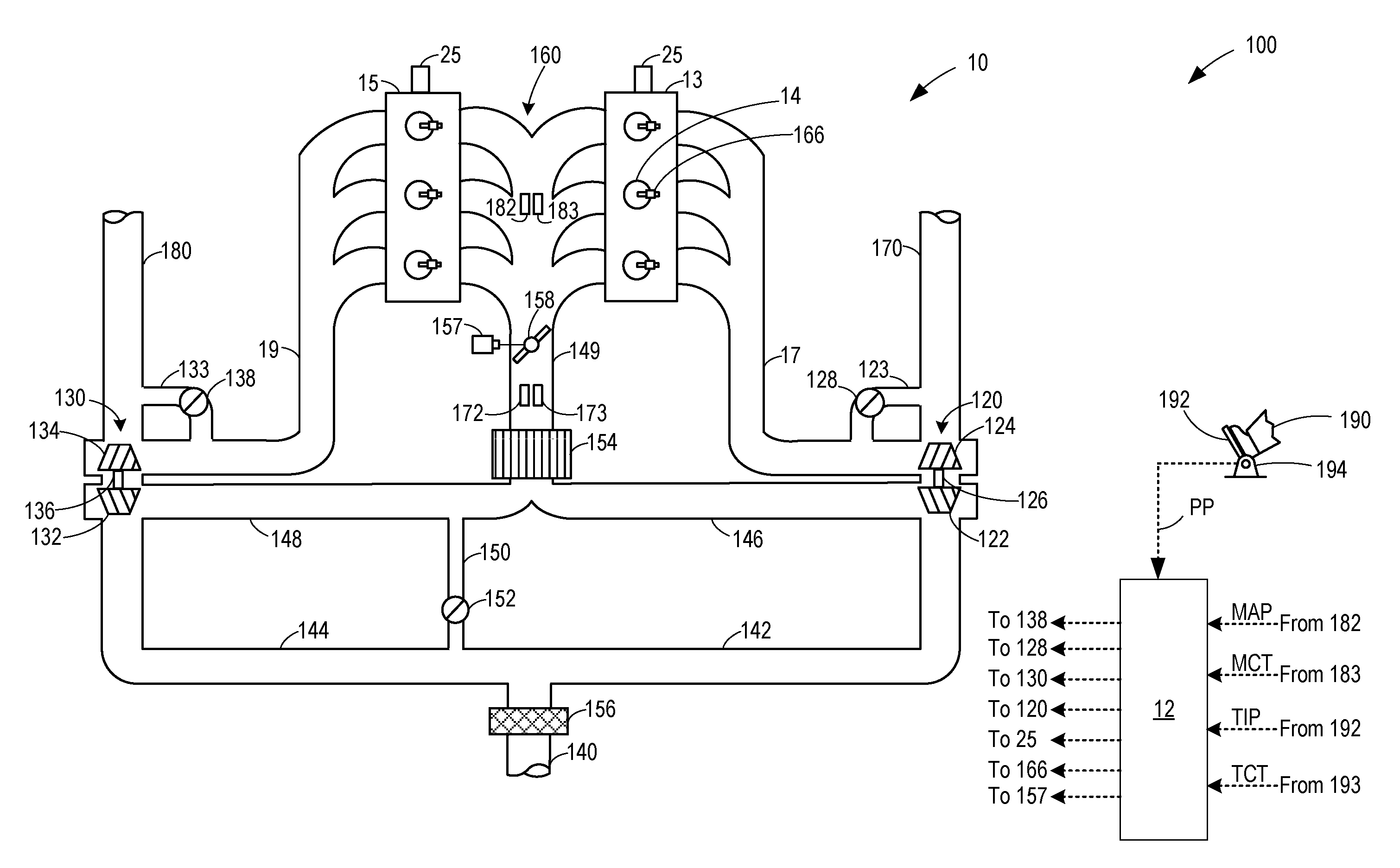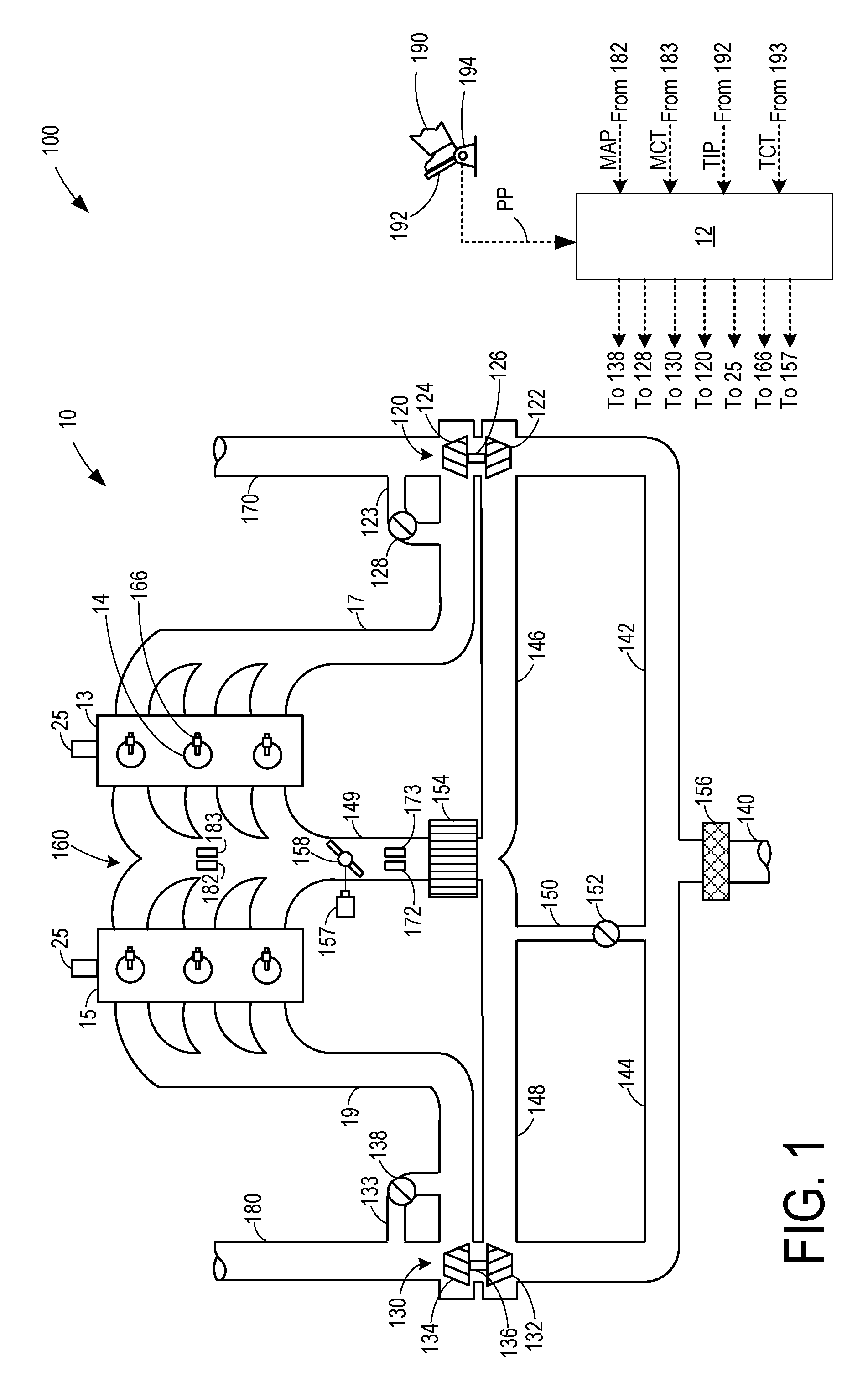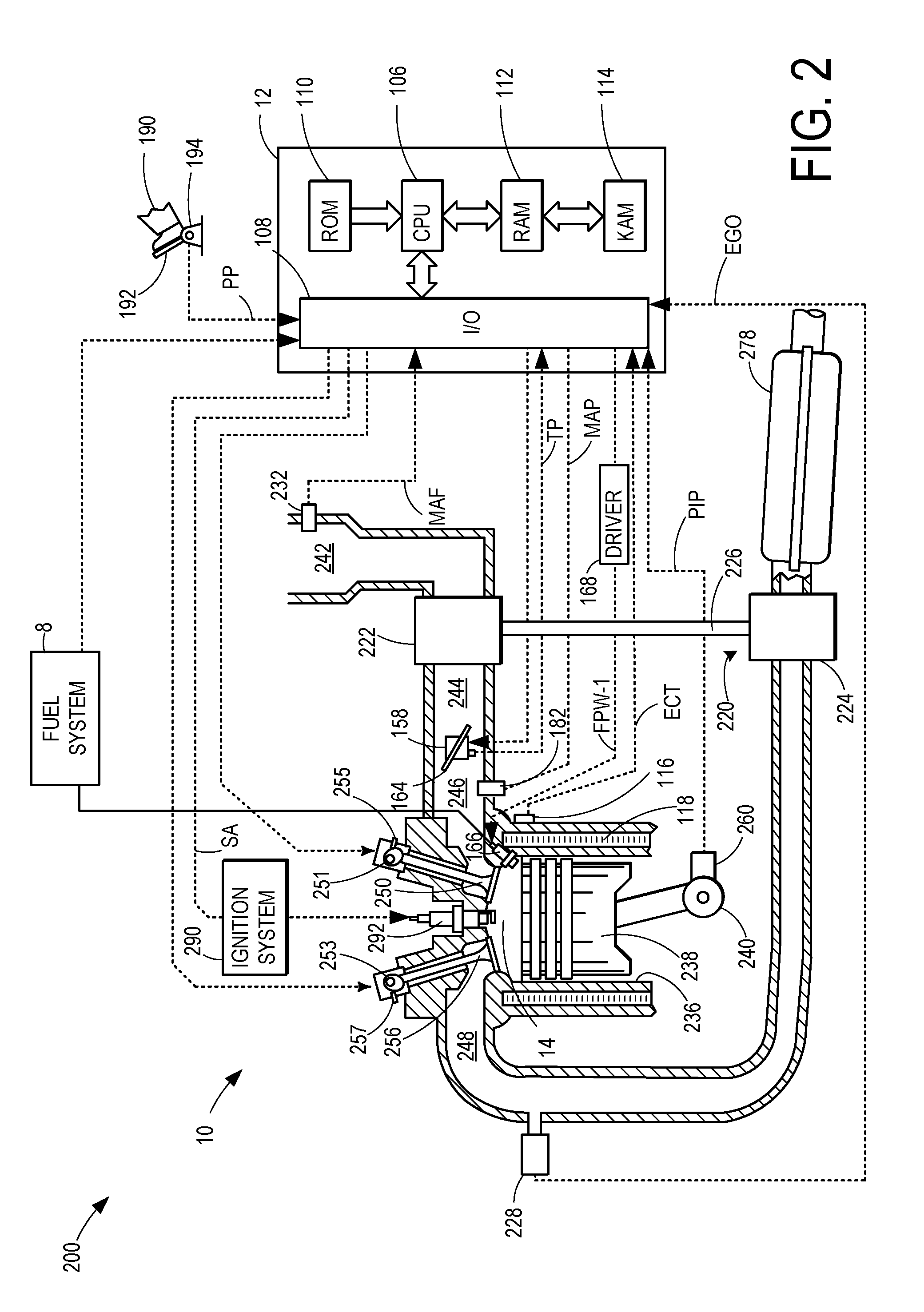Methods and systems for turbocharger control
a technology of turbocharger and feedback, applied in the direction of electric control, machines/engines, combustion engines, etc., can solve the problems of not solving the tip control problem, slow response time and increase error, and the limitations of such approaches, so as to improve engine performance and thus vehicle driveability.
- Summary
- Abstract
- Description
- Claims
- Application Information
AI Technical Summary
Benefits of technology
Problems solved by technology
Method used
Image
Examples
Embodiment Construction
[0015]The following description relates to methods for controlling a turbocharged engine, such as depicted in FIGS. 1-2, by adjusting the turbocharger (for example, via a wastegate position, a variable vane position, a variable nozzle position, etc.), and throttle concurrently. Using combined feedback and feed-forward control mechanisms, a turbocharger can be controlled while regulating the throttle inlet pressure. By using non-linear models of the turbocharger dynamic system and the engine airflow system, as depicted in FIG. 3, the measured throttle inlet pressure signal may be combined with measured airflow signals, to separate effects on throttle inlet pressure due to control errors and other conditions (that are addressed by the wastegate solenoid duty cycle control) from disturbances due to throttle movement or changes in throttle flow due to other factors such as engine speed or cam timing changes. An engine controller may perform example control routines, such as those elabor...
PUM
 Login to View More
Login to View More Abstract
Description
Claims
Application Information
 Login to View More
Login to View More - R&D
- Intellectual Property
- Life Sciences
- Materials
- Tech Scout
- Unparalleled Data Quality
- Higher Quality Content
- 60% Fewer Hallucinations
Browse by: Latest US Patents, China's latest patents, Technical Efficacy Thesaurus, Application Domain, Technology Topic, Popular Technical Reports.
© 2025 PatSnap. All rights reserved.Legal|Privacy policy|Modern Slavery Act Transparency Statement|Sitemap|About US| Contact US: help@patsnap.com



